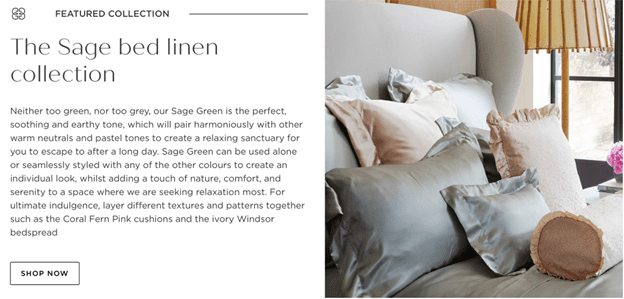For decades luxury brands have relied on the in-store experience – launch events, runway shows, personal shopping assistants and decadent interior styling have all played a part in the luxury retail strategy. And for a long time, that was enough.
But what about now? Increased demand for online shopping and reliance on social media as a core communication channel has always meant that the rise of luxury ecommerce was somewhat inevitable, and the COVID-19 pandemic has only accelerated the shift to a digital-first approach for many.
Many luxury brands have been left floundering to quickly alter their business strategies, but it’s no secret that the luxury sector has been the slowest to embrace a digital approach. At the time of writing, you still cannot purchase Chanel bags or apparel online (at least not directly, but more on that later). Their reasoning? Ecommerce takes away the experience and “service is much more important.”
Whilst a long-established, household name like Chanel may see ecommerce as optional, not many brands are in a position to disregard online selling, particularly startups who are forging a name for themselves in an post-pandemic, digital age. So how do you recreate the in-store experience online, and why should they?
Why should luxury brands sell online?
We can split the answer to this question into three main points:
- There is a growing consumer demand for luxury ecommerce, and the void is currently being filled by third-party, multi-brand ecommerce websites such as NET-A-PORTER and Farfetch, decreasing direct business for many luxury brands.
- In 2020, over two billion people purchased goods or services online. Our shopping habits have been shaped by the pandemic and as a result, customer expectations of the online shopping experience have been heightened.
- By the mid-2020s, Gen Z consumers born in 2010 or after will account for over 2 billion global consumers – and we all know their preference when it comes to the digital or in-person experience
Customers want to self-serve more than ever before, even for high value purchases. Everything from cars to holiday homes are now being sold online – that’s right – consumers are actually purchasing property without ever having stepped foot inside.
Bringing the luxury retail experience online: key considerations
Personalisation
An essential part of delivering a high-end experience, many consumers will expect a more personalised approach when shopping with luxury brands. When you enter a brick-and-mortar designer store, you expect a certain level of service, with staff always on hand to offer recommendations based on your personal needs and taste. Luxury brands are adapting this for the online world with live video chats wherein customers can speak to a stylist on demand.
One of the simplest ways to offer personalisation to a global audience is to allow them to switch to their country and currency, meaning every product will be shown in the correct pricing format, and all copy in their native language. Ecommerce platforms like Shopify Plus allows online stores to not only sell globally, but with localised currency, languages and experiences in every market.
Many ecommerce sites have a live chat function and this could be even more important for luxury ecommerce brands, as it gives visitors instant access to a member of your team who can answer any questions, help them to navigate the site, find what they’re looking for and make product recommendations.
Design
Perhaps the simplest and most obvious way to give your website the luxury appeal is through website and UX design. Working with an experienced web designer, as well as a skilled graphic designer will ensure that every visual asset on your website is on brand and of the highest quality. Incorporating visual elements such as video can create a more immersive experience, too.
User experience
Striking the balance between aesthetic and functionality is essential. In the past we’ve seen luxury fashion houses launch highly conceptual website designs that, whilst visually striking, simply don’t perform very well. Consumers have come to expect a seamless user journey and simple checkout process – user experience should be at the forefront of everything you do.
The level of seamless service you would expect in store must be replicated online, and ideally any aftercare services you offer, too.
Copywriting & website content
All copy across your website should be on brand, expertly crafted and consistent across all channels – having a defined tone of voice is key. Your content, especially when it comes to product pages, allows you to convey the quality of your products and highlight key features that are likely to convert your target customer.
Convenient delivery options
When a customer is purchasing a high value item, they want assurance that it’s going to reach them safely and in pristine condition. Retailers should go the extra mile to ensure this, offering the flexibility to choose a delivery day and time slot – even same day delivery if possible.
Product imagery
Since your potential customers can’t browse the shelves or feel products in their hand before purchasing, you need to ensure that you provide several product photos (enough to showcase every feature of the item), and they must be high quality so that website users can zoom in to view details and textures. Many brands have incorporated Augmented Reality into product pages to allow consumers to “try on” items before they buy, or see how items of furniture look within their homes.
A 360° virtual tour is also a great product page integration. Remember the car company we mentioned earlier?

It’s clear to see how Cazoo have managed to sell cars online – up to 30 high-quality photos, plus the ability to view every vehicle from all angles thanks to 360° functionality mean customers can rest assured that they know exactly what they’re getting from their money. Luxury retailers can and should take note of ecommerce websites like this one, as Cazoo’s approach can be applied to almost any high value item.
Design with a difference
Let’s take a look at a luxury ecommerce site in action.
In 2021 we launched a brand new Shopify website for luxury silk bedding brand Gingerlily. Design aesthetic, functionality and product pages were all key to the customer journey. The subtle incorporation of video makes for a more immersive experience, emphasising the luxurious texture of Gingerlily’s silk products. Our content team ensured that all website copy was on-brand, optimised for organic search and conveyed the key benefits of Gingerlily’s products.
The result? A digital experience that feels as elegant and luxurious as the product.

If you’re looking to launch your retail business online from scratch, or have an existing ecommerce website that needs a refresh, get in touch to chat about our website development services.

